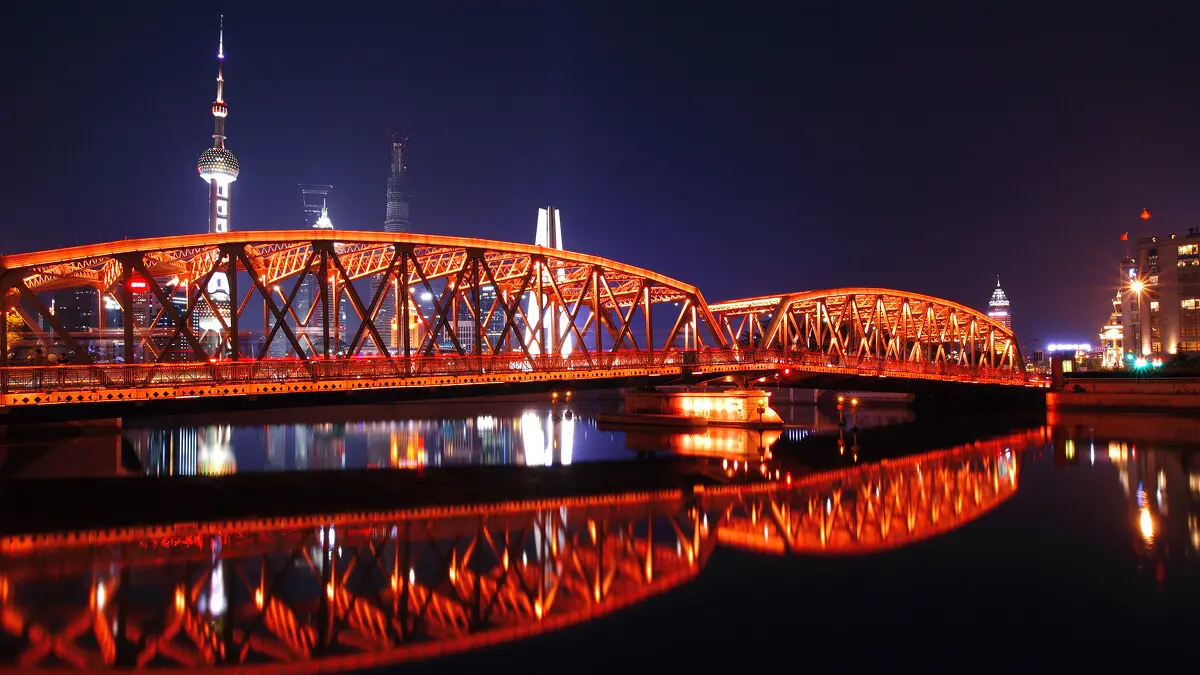The Waibaidu Bridge (外白渡桥), also known as the Garden Bridge or the Garden Pier, stands as an iconic symbol of Shanghai’s rich history and architectural heritage. Located on the historic Bund, the bridge has witnessed the city’s transformation from a humble fishing village to a global metropolis. With its distinctive design and strategic location, the Waibaidu Bridge has become a beloved landmark, connecting the past and the present while serving as a testament to Shanghai’s progress.
Historical Significance
The construction of the Waibaidu Bridge dates back to 1907 during the Qing Dynasty, making it one of the oldest bridges in Shanghai. Originally built as part of the city’s modernization efforts, it aimed to facilitate transportation and connect the bustling business district of the Bund with the Huangpu Park, which was a popular recreational area. Designed by British engineers, the bridge combines elements of Western and Chinese architecture, exemplifying the influence of foreign cultures on Shanghai’s development.
Architectural Marvel
Spanning across Huangpu River, the Waibaidu Bridge showcases an impressive truss structure made of steel, making it one of the earliest steel bridges in China. The bridge’s elegant and functional design incorporates Victorian-style lampposts, decorative railings, and intricate details that add a touch of grandeur to the cityscape. The vibrant red color of the bridge further enhances its visual appeal and complements the surrounding colonial-era buildings.
Strategic Location
Situated at the junction of the Huangpu River and Suzhou Creek, the Waibaidu Bridge holds a strategic position within Shanghai. It offers panoramic views of the city skyline, including the iconic Oriental Pearl Tower and Lujiazui financial district. Moreover, the bridge serves as a vital link between the past and present, connecting the historic Bund with the modern Pudong area. Its location has made it a popular spot for both locals and tourists, attracting photographers, artists, and couples who come to enjoy the stunning scenery and capture memorable moments.
Cultural Icon
Over the years, the Waibaidu Bridge has become an enduring cultural symbol of Shanghai. It has been featured in numerous films, literature, and artworks, both domestically and internationally. The bridge represents Shanghai’s resilience, adaptability, and ability to blend Eastern and Western influences harmoniously. The symbolic significance of the bridge extends beyond its physical structure, encapsulating the spirit of Shanghai as a global city that embraces its historical roots while embracing modernity.
Conclusion
The Waibaidu Bridge stands tall as a testament to Shanghai’s rich heritage and architectural excellence. Its historical significance, striking design, strategic location, and cultural importance make it an integral part of the city’s identity. As visitors walk across the bridge, they are not only connecting the two banks of the Suzhou Creek but also traversing through time, experiencing the evolution of Shanghai. The Waibaidu Bridge remains a beloved landmark, a symbol of Shanghai’s progress and a testament to the city’s ability to harmoniously blend the old and the new.


